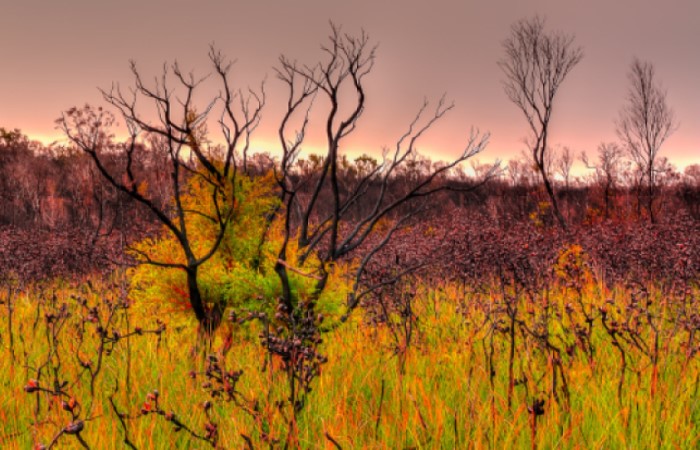
Mooloolah River National Park Photo credit: S. McCallum

Climate change
We’re addressing climate change in a progressive and responsive way.
In this section
Climate change is a global, national and a local issue. We expect climate change to impact our region's natural and built environment, economy and liveability.
Council recognises that we are in a state of climate emergency that requires urgent and sustained effort to achieve net zero emissions by 2041.
Over time, we expect our region will be exposed to:
- Rising sea levels
- More extreme weather events
- Increasing temperatures
- Drier conditions
- Changes to biodiversity (plants and animals).
Rising sea levels
Across the globe, average sea levels are increasing. The Commonwealth Scientific and Industrial Research Organisation (CSIRO) has modelled sea level increase to 2100. It shows that our coastal areas are likely to change over the long-term. A rising sea level is expected to effect our coastal communities. The impact of existing coastal processes, such as storm tide inundation and erosion, will be noticeable. As such, we need to plan for, and adapt to, coastal hazards.
Extreme weather events
We can also expect changes in the frequency and magnitude of extreme weather events. This includes cyclones, storms, droughts, heat waves and flooding. This may cause damage to buildings and infrastructure and increase the frequency and severity of bush fires. Which in turn, may increase maintenance costs and insurance premiums.
Increasing temperatures
We expect our annual average temperatures to rise. Residents will experience more days each year over 35°C, and heat waves too. These extreme temperatures place increased pressure on public health and our fire and emergency services.
Drier conditions
We are expecting drier conditions and for longer periods with the total annual rainfall and soil moisture likely to decrease.
Changes to biodiversity
Our biodiversity, habitats and ecosystems are also expected to change. Plant and animal species may disappear or become extinct, while others migrate to new areas. In our region, we've already seen eucalypt-dominated vegetation growing where rainforests once stood.
Our built environment and communities
Our built environment and communities will also be exposed to the impacts of climate change. A greater number of extreme events will likely result in increased damage to buildings and infrastructure; emerging diseases, heat waves and extreme temperatures will affect public health; and community resilience will likely be affected by higher repair and maintenance costs, as well as changes to the insurability of homes and assets.
These impacts will compound and cascade through our economic, natural and social systems as more people, homes and built assets are exposed to these predicted hazards. Under this future, the need for adaptation or transition planning increases to enable appropriate disaster resilience, a reduction in residual risk and to maximise council and community adaptive capacity.
Sustainable lifestyle choices
Our region’s greenhouse gas emissions are predicted to rise as a result of our increased population and growing economic activity. So we’re working with the community to build awareness of our changing climate. This enables us to find creative solutions or new technologies to help us to adapt to, and mitigate the effects of climate change.
To help reduce greenhouse gas emissions, we can:
- Avoid, reduce and recycle more, as land-filling of community waste makes up the largest proportion of our emissions
- Reduce our consumption of electricity and fossil fuels by being more energy efficient and utilising new and innovate technologies
- Protect and enhance our gardens, parks and green spaces
- Buy local, to lessen our reliance on transported goods.
You can also find simple and effective sustainable lifestyle ideas on the Living Smart website.
Through the Environment and Liveability Strategy, we'll build resilience and adapt to climate change. We plan to do this in a progressive and responsive way, while balancing the needs of our growing population and economy.
You may also be interested in
Population change
The Sunshine Coast is one of the fastest growing areas in Australia.
Economic change
By 2033, our economy is forecast to double and by 2041, we expect the creation of 100,000 new jobs.
Technological change
We need to acknowledge and respond to, and adopt emerging trends and technologies.